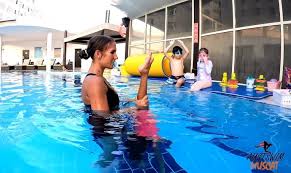Splash, Learn, Survive: Why Water Skills Should Start in School
Australia’s climate, culture, and coastline make water a central part of childhood. From backyard pools to beach holidays, Aussie kids are often near water before they can walk. But access to water without skills creates risk. A water safety course early in life could mean the difference between panic and preparedness.
Yet many schools still treat swim education as optional. That needs to change.
Why Early Water Education Matters
Drowning remains a leading cause of accidental death in children under 14 in Australia. According to the Royal Life Saving Society, 41 children aged 0–14 lost their lives to drowning in the most recent reporting year — the majority of these under 5 years old. Prevention starts with education.
A structured water safety course teaches not just swimming technique, but how to assess risk, identify hazards, and respond calmly under pressure. These lessons stick for life.
Unlike sports programs or elective activities, water safety builds essential life skills. The goal isn’t to create athletes — it’s to create confidence and competence in life-threatening situations.
What a School-Based Water Safety Course Includes
While no two programs are identical, most courses follow a progressive framework:
- Water familiarisation: Helps kids get comfortable in and around water.
- Basic swimming strokes: Focused on floating, breathing control, and coordinated movement.
- Survival skills: Includes treading water, swimming in clothes, rescue techniques, and safe entries/exits.
- Emergency response: Teaches kids how to signal for help and assist others safely.
Many schools already tick the “sports” box with swimming carnivals — but that’s not enough. A competitive swim doesn’t teach how to stay calm in a rip, or what to do if a friend slips into a lake.
Children need systematic exposure to the principles of aquatic safety. That means embedding a proper water safety course into the school calendar, not treating it as a bonus activity.
Case Study: How One School Saved Lives
In a rural Victorian town, a Year 3 teacher noticed her students panicking during a class trip to a local pool. With no swim program at school and limited access outside it, most children lacked even basic water confidence.
She rallied for change. The school partnered with an accredited provider and introduced weekly lessons for all students under 12. A year later, one of the Year 4 boys rescued his younger sister from a backyard pool using a towel and the “reach rescue” technique he learned in class.
These are the kinds of stories that never make headlines — because the danger never escalated. And that’s the point.
The Academic Link: Water Safety Supports Learning
There’s also growing recognition that physical activity supports brain development. Water-based learning uniquely combines physical, cognitive, and emotional engagement. Children in a water safety course must listen, observe, problem-solve, and practise, all in a dynamic environment.
That supports:
- Focus and attention in classroom learning
- Resilience and coping skills
- Confidence in high-pressure scenarios
- Social development through teamwork and communication
In this way, water education isn’t a distraction from academic goals — it complements them.
Why Schools Shouldn’t Leave It to Parents
Some argue swim education is a family responsibility. But that assumes equal access — and that’s not reality.
Barriers include:
- Cost of private lessons
- Travel distance to a swim facility
- Parents’ own water confidence (or lack thereof)
- Time availability in busy households
By offering a water safety course through schools, all students get an equal chance — regardless of background.
And for children with disability or additional needs, school-based programs often provide trained instructors, modified lessons, and group settings that encourage participation.
Building a Safer Generation
Incorporating water safety into schools isn’t just about avoiding tragedy — it’s about giving kids freedom. A child who can swim and understand water risks can explore, play, and socialise more confidently.
They’re safer at the beach, the river, the pool party. They’re more likely to help others in an emergency. And they carry those skills for life — into adulthood, parenthood, and beyond.
A school without a water safety course is leaving that potential unrealised.
Takeaway: Make It a Standard, Not a Luxury
Let’s be honest: school systems are stretched. But if we can find time for sport, art, and assemblies, we can make time for safety.
There’s no downside to embedding swim education in schools. And the upside? Safer kids, stronger communities, and a generation who know how to handle themselves around water.
Learn More and Dive Deeper
Australia has a long way to go before universal water safety is a reality. If you’re an educator, policymaker, or parent — advocate for inclusion now. Look for programs that build not just skill, but awareness.
- Explore structured options through a quality water safety course
- Learn about age-appropriate benchmarks through this national resource from Royal Life Saving
- Find out how to integrate a water safety course into your local school or early years setting
- Review child water competence criteria before holidays or excursions via a certified water safety course

